Less than two days after it was posted, the protest song “Baraye…” (“For…”), by the Iranian singer and songwriter Shervin Hajipour, was played 40 million times on his Instagram page alone and, besides its amazing social impact in the first week of recent nationwide protests in Iran, it became one of the most important songs in Iran’s recent history.
Hajipour was quickly arrested by security agents of the Revolutionary Guards and forced to remove the song from his social media, including Instagram, but the video of the song was shared by others and many other singers performed it as well. Within a week of the protests kicking off, after Mahsa Amini’s September 16 death, Iranian expatriates gathered in solidarity with their compatriots is cities around the world and sang this song as the anthem of their protests.
The Islamic Revolution and prohibitions on music
For two decades after the 1979 Islamic Revolution, and the establishment of the Islamic Republic, Iranian music within the country was in decline. Many prominent artists, both those who worked within the framework of traditional Iranian music and more modern pop stars, either retired or were forced to leave their country.
In the early years after the Revolution, only a few artists were allowed to work. The most prominent of them were Mohammad Reza Shajarian and Shahram Nazeri, who were allowed to remain active because in the months before the Revolution they had joined a movement that created songs in its support. But female singers and pop musicians were permanently banned from working. After the victory of the reformist presidential candidate, Mohammad Khatami, in the 1997 presidential election, restrictions were loosened somewhat, and popular music returned with new faces.
To offer any work of art to the public in Iran, one must receive a permit from the Ministry of Culture and Islamic Guidance. When it comes to music, it is difficult to receive the permit, and the laws governing musical activities have become even more stringent in the past decade.
Any musical artist who wants to perform publicly must first ask the ministry’s Office of Music to open a case for him – and under Iran’s laws it can only be a him for solo artists. His background is then checked and, if he is “cleared” by the security check, then he or his group receive a permit. But this is not the final step. Each piece of music must be examined and approved by the Ministry of Culture. If the music has lyrics, then first the lyrics must be reviewed and approved by the Poetry and Lyrics Examination Council. The Music Examination Council must then approve the music itself. Any song that even hints at protest or social issues is banned. Together these two councils censor any music that the Islamic Republic finds objectionable for whatever reason.
But there is also another music scene in Iran: the unofficial or underground scene. But while in most places in the world, underground music goes against the mainstream, this is not necessarily the case in the Islamic Republic. The restriction on music in Iran force many artists of every style of music to go underground. Many of these artists are those who had previously submitted their works to the Ministry of Culture and, after they were denied a permit to perform in public, they decided to go underground. And in most cases, going underground in Iran is not a choice, but the only way.
Many underground music artists have also been arrested, or their studios have been raided, by security forces who have treated them with violence. One the most recent artists to suffer such a fate was the famous protest rapper Reza Pishro, who was arrested and charged by the Revolutionary Court, and was forced to escape and seek asylum in Turkey.
Under the reformist President Khatami, when the internet came to Iran, underground music had a chance to find an audience which grew with the spread of internet access. But this “reformist” period means that, while there was some cultural opening, music was still not fully unshackled. But a few pop stars came to mainstream public attention. And even during this period, the alternative rock band O-Hum failed to get a permit from the Ministry of Culture, despite their lyrics being drawn from the classical Persian poets Hafez and Rumi.
And still in this period, the late 1990s and early 2000s, there were many rock groups who had to work underground because rock music was banned in Iran, such as 127, Kiosk and Sarakhs.
Rap music, meanwhile, has always been part of the underground in Iran and, in the past 20 years, almost no rap groups even bothered to apply to the Ministry of Culture for a permit. The terms “rap”, “rock” and “metal” are themselves banned in Iran. And while it is true that a number of rock albums were published and a few rock concerts were held, usually in permit these bands described their music as “pop” or “fusion” to escape censorship.
All of which is to say that Shervin Hajipour, an R&B and hip hop singer, is an underground artist and was not widely known before his song “Baraye”.
From “Winter Is Over” to “Lay Down Your Gun”
The importance of the song “Baraye…” becomes clear if we look at the power of song at critical junctures in contemporary Iranian history – in particular the 1979 Revolution.
The years between 1969 and 1976 were a boom time for Iranian popular music. And when the first tremors of the Revolution were felt, a significant number of songwriters, singers and musicians believed that it would bring a better future for the country. Musicians at that time could freely go to a recording studio and record any kind of music that they wanted. And in just a few months, up until the Revolution in February 1979, more than 100 songs and anthems were created and recorded by musical artists including Farhad, Marjan, Esfandiar Monfaredzadeh, Hassan Shamaizadeh, Mojtaba Mirzadeh, Dariush, Shahram Solati, Parviz Meshkatian, Shajarian and Mohammad Reza Lotfi.
None of these artists knew they were creating motivational music for a phenomenon that would push them to retire or force them into exile. The revolutionary government itself had several songs and anthems that were repeatedly broadcast on state radio and television. Among them were successful songs like My Schooldays Friend that was used by others at later sensitive political moments.
A few such moments have occurred since the Revolution and before the latest protests. One was the July 1999 students protests that started with peaceful demonstrations in Tehran against the closure of the reformist newspaper Salaam. A student dormitory was raided by riot police and paramilitary forces, during which at least two students were killed, and more than 300 were arrested. Many believe this was the first serious protest movement against the Islamic Republic regime.
No songs were created to commemorate this event at the time and many facts about it were revealed only years later.
The next important juncture was the aftermath of the disputed 2009 presidential election – when huge crowds took to the streets to protest Mahmoud Ahmadinejad’s victory which most Iranians considered a fraud. The 2009 Green Movement was far more serious than the 1999 students protests and there were violent clashes between the people and the police or security forces. One of the best-known songs about this event was “Lay Down Your Gun”, sung by the legendary traditional singer Mohammad Reza Shajarian. He paid a heavy price for singing this song and for criticizing the Islamic Republic. Shajarian was banned from working and was never again allowed to go on stage in his country.
Many other songs were created at this time, as well, and some political songs from before the Revolution were revived, like the famous song “Winter Is Over” which was first published in 1978 by the Marxist People’s Fadaei Guerrillas. Another song that became popular was “A Good Day Shall Come” by the famous Iranian rapper Hichkas(“Nobody”). The song imagines a future when there is no injustice and no tyranny and when the Iranian people live in peace.
Then came the 2017-2018 protests, followed by the bloody November 2019 protests, both of which were brutally suppressed. In November 2019, people took to the streets to protest the sudden three-fold increase in the price of gas and around 1,500 protesters were killed.
The Iranian government had predicted that people would protest the increase in gas prices. The internet was cut in advance and security forces massacred protesters. And then, on January 8, 2020, in another horrifying incident, the Revolutionary Guards shot down the Ukrainian Airlines Flight PS752 over Tehran, killing all 176 people onboard, once again triggered a nationwide wave of rage.
A number of songs were created in response to November 2019 protests and the downing of the Ukrainian plane, such as “The Home of Spring” by Ali Azimi or “Clenched Fists” that Hichkas wrote for the November protests. Mohsen Namjoo sang the song “Remember” to commemorate the victims. Each of these songs have their own qualities but, aesthetics aside, none of them have been as influential as “Baraye…” has been during recent protests that started with the death of Mahsa Amini.
How Big is 40 Million?
Shervin Hajipour’s song was played 40 million times in less than two days on Instagram alone. The scale of this achievement is plain but it is even more apparently given that Hajipour previously had only about 50,000 followers on Instagram. He had more than two million after just two days – and the 40 million views for his song far exceeded the 1-7 million impressions typically received by even the most popular Iranian songs on Instagram.
Hossein Maghsoudlou, known professionally as Amir Tataloo, is one of most popular figures in contemporary Iranian music. He is also controversial and, as well as fans, has many detractors. And after 20 years of public life, he has about 700,000 followers on his YouTube channel, while his hit song “I am Not Talking to You” has been played 10 million times on YouTube. The song has been played about 2.4 million times on Spotify.
“For…” is the only Iranian song that has been played 40 million times online – not counting the numerous reposts and other renditions inside and outside of Iran. The song’s appeal is unprecedented.
All lines in the lyrics of the song begin with “For...”:
For dancing in the streets,
For the fear we feel when kissing a loved one
For my sister, your sister, our sisters,
For changing corrupted minds,
For the shame of the inability to provide, for being penniless
For the yearning for just a normal life,
For the dumpster-diving boy and his dreams.
The song follows a pattern, where each lyrics begins with the word “For…”, to express yearning for simple social freedoms in Iran or outrage over oppression under the Islamic Republic.
Hajipour used tweets posted by other Iranians along this theme for his lyrics. One tweet, for example, said: “For all the innocent dogs that were legally massacred by the municipalities.” Hajipour uses the same sentence with a small change: “For the massacre of innocent [defenseless] dogs.” Iranian municipality agents are known to patrol the streets and sometimes kill stray dogs by shooting them with hunting rifles.
Hajipour says, in another lyrics, “For the smiling faces,” which is adapted from another tweet: “For a day when all our profile pictures will show us smiling”. The tweet alludes to the fact that, in Iran, Twitter users afraid for their own security cannot use their real names and pictures.
The “For…” tweets trend spread quickly in Iran during the first week of the current protests. Hajipour therefore took his inspiration from a popular trend that captured the protests of many unhappy Iranians and he succeeded, perhaps without being aware of it, in creating one of the most effective political songs, or perhaps the most effective one, in recent Iranian history.
No song since 1979, about an important social event, has found such fame and has been covered and adapted sung by so many people at so many rallies around the world. The song is a manifesto of simple and basic demands to live freely, in a free society, created by a child of the 1990s whose generation is now venturing into the streets to protest and to sing their song.
For women, life, freedom,
For freedom,
For freedom,
For freedom.
This article was originally commissioned and published by the webmedia AuxSons.com - a French non profit media association dedicated to worldwide music. It is republished here as part of a partnership agreement between IranWire and #AuxSons.
visit the accountability section
In this section of Iran Wire, you can contact the officials and launch your campaign for various problems










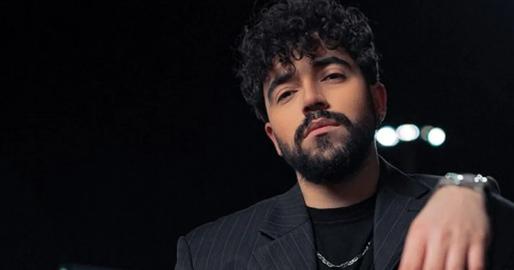
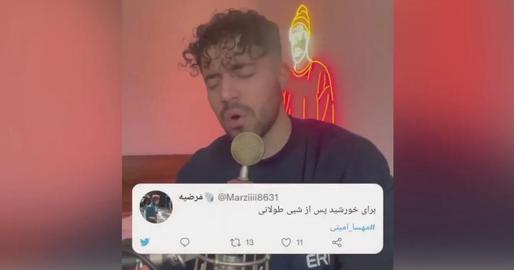
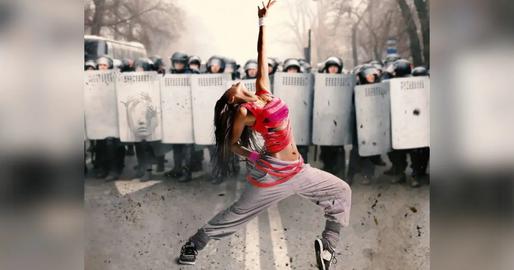
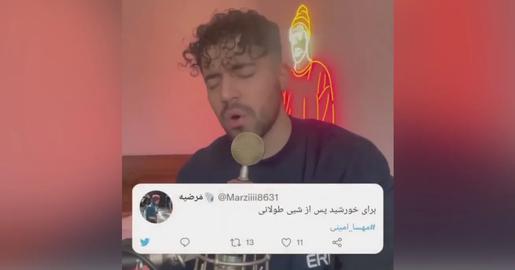










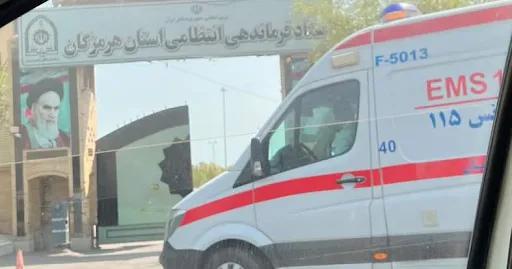
comments